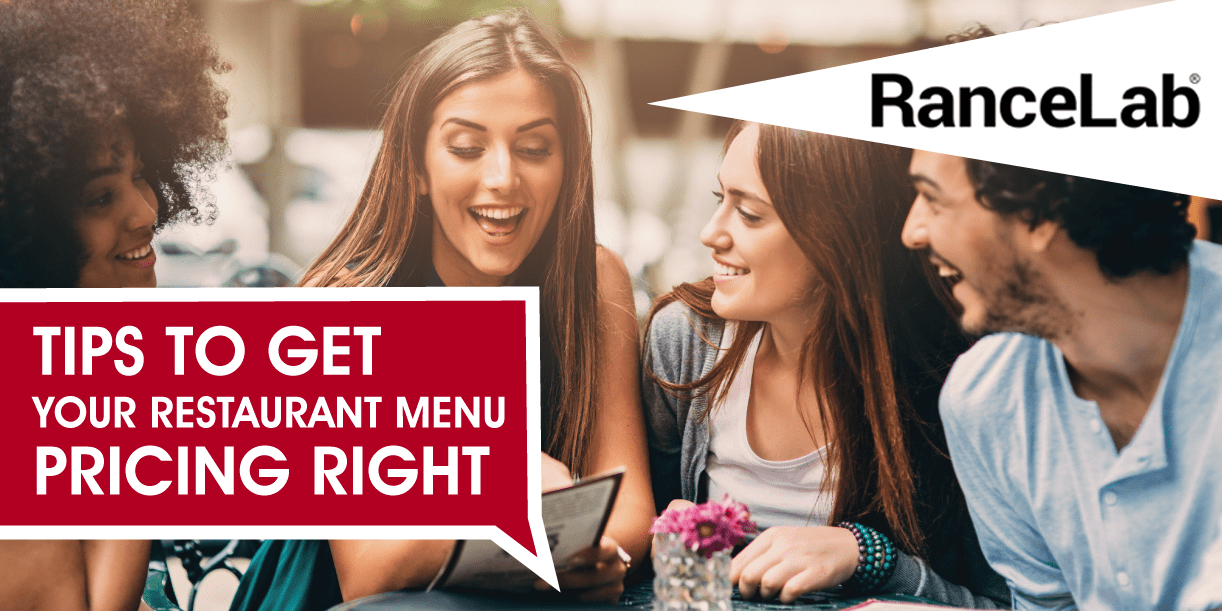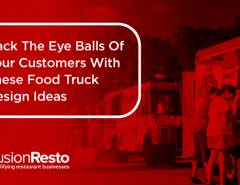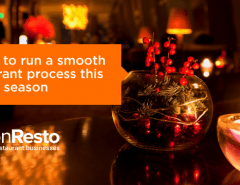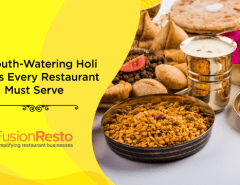When starting a new restaurant is on your mind, everything is taken into consideration – the kind of food, services, location and more. The chaos of it all can push the ‘menu pricing’ to the very end of your checklist. Fair enough. You don’t need to start pricing your food items even before you know which ones are to be included, but this does not make menu pricing the least important aspect of putting up your restaurant together. The very first thing you will be working on will be the cuisine you wish to serve at your restaurant. Then why push the pricing away!
Don’t let the calculations make you procrastinate here. You need to do this and you need to do this correctly. Overpricing or under-pricing can cause your restaurant and its reputation considerable damage and let’s not even get to how it affects your walk-ins. With the pricing holding so much power, it is time to understand how to get it right.
1. The Type of Restaurant
What is the kind of restaurant you plan to open? Is it a Quick Service Restaurant or a fine dining restaurant? Or is it a cafe serving only finger food? First things first, you need to add up the cost of raw materials blindly. This is a direct cost to you and needs to be charged as it is. Add to this the cost of getting the food prepared. This means adding the cost of labour, i.e., the chef and the waiters who serve. Then comes other overheads like the ambience, decor, etc. To put it in one statement, your menu prices will total up the food costs, labour costs, overheads, and of course, the profit you wish to earn per dish.
Mathematically, the GMV (Gross Margin Value), that is (Total Revenue – Cost of goods sold)/Revenue is different for different kinds of set ups. It is approximately 70-75% for fine dining while for QSRs it can be as low as 40-45%. This is because QSRs don’t have a lavish infrastructure or too much labour for the services.
2. Money Bags for Specialities, Please!
If you have any exotic item on your menu, feel free to add manifold profit margin to it. Of course, it needs to be within limits but can be higher than other dishes on the menu. This is because you are offering your customers something unique that is not easily available. Probably it is a rare food item invented by your restaurant and is not to be found anywhere else. A premium pricing for such a dish is absolutely justified. You can stack up on big profits with this one.
3. Smart Placement of Food Items
This is a highly important strategy for you to take into consideration. This can totally change the way you make your profits. Relative pricing is the best way to sell lesser priced items that have bigger profit margins. Place a relatively higher priced item that has lesser profit margins next to a cheaper food item that gives you good returns. Your customer will save money by buying the cheaper item while you will gain bigger because it yields higher profits to you. Win-win for everyone, isn’t it?
4. Decorate Existing Dishes
No. Not with confetti. You need to decorate it with some exotic herb or garnishing that changes its flavour and makes it tastier. You can then demand a premium price for the garnished version. People will be urged to try the new flavour of the same dish. Do this to some of your popular dishes and see the profits soaring.
5. Pay Attention to Quantity
This one is simple. For a larger quantity, you need to charge more and for a smaller portion, charge less. However, you need to ensure that you are not going overboard with the prices when serving larger quantities because new customers who are unaware of the quantity per serving will end up getting frustrated. Even though quantity is a good parameter to mark your prices on, don’t forget to take into consideration the other factors as well. Keeping the quantity of your food moderate is the best thing to do.
6. Play with Psychology
Putting a currency mark next to the number on the menu is a bad idea. Psychologically, this reminds the customer of their expenditure and makes them uncomfortable. Leave the price as just a number. No need for any prefix or suffix please.
7. Right at the Bottom
While most restaurants have their pricing stated on the right side, there is another way to play with this format. Write the price of the food item right at the end of the description. By the time the customer finishes reading about the dish, he/she will probably be already smitten by it and will not be affected by its price.
8. Combo Meals
This one is a no-brainer. Offering combo meals is highly profitable to your restaurant. Most people go with these combos in order to avoid spending extra on another dish not realising that they actually came to buy just one of the dishes on the combo! Clean sweep, isn’t it?
9. A Special One from the Chef
If you have noticed, most restaurants have a ‘Chef’s Special’ dish or many ‘Chef’s Special’ dishes on the menu. These are nothing but sales tactics. Of course, the chef will whip up a delicacy for the customers, but the premium price is only because of its name.
Chef’s special dishes are nothing but the already existing food items on the menu garnished with some exotic ingredients. Choose the dish that gives you the highest profit and attach a premium price tag to it. Maximise your profits with Chef’s Specials!
10. Your Location
You can’t be exorbitant if your restaurant is in a place that has a population with lower spending capacity. Your location plays a role in the menu pricing and be careful to not go overboard or lower than you should, depending on where you wish to open your upcoming restaurant.
With these tips, your restaurant will not go wrong with its menu pricing. These points are the very foundation of your menu, and if done correctly, there will be no reason for your customers to not return to your restaurant.
If you are wondering about how will you manage to do so many calculations and churn out the perfect prices in your menu, an efficient restaurant software can do the job for you. A profitable and popular menu will be engineered, leaving you worry-free about any possibility of errors. Your restaurant’s pricing is sorted out now but don’t forget to promote your chef’s special and meal combos on the day of your restaurant’s launch! After all, these happy faces will be bringing in more people to your restaurant the next time around.




